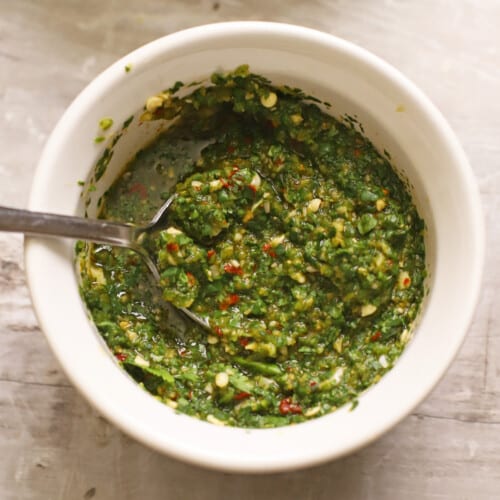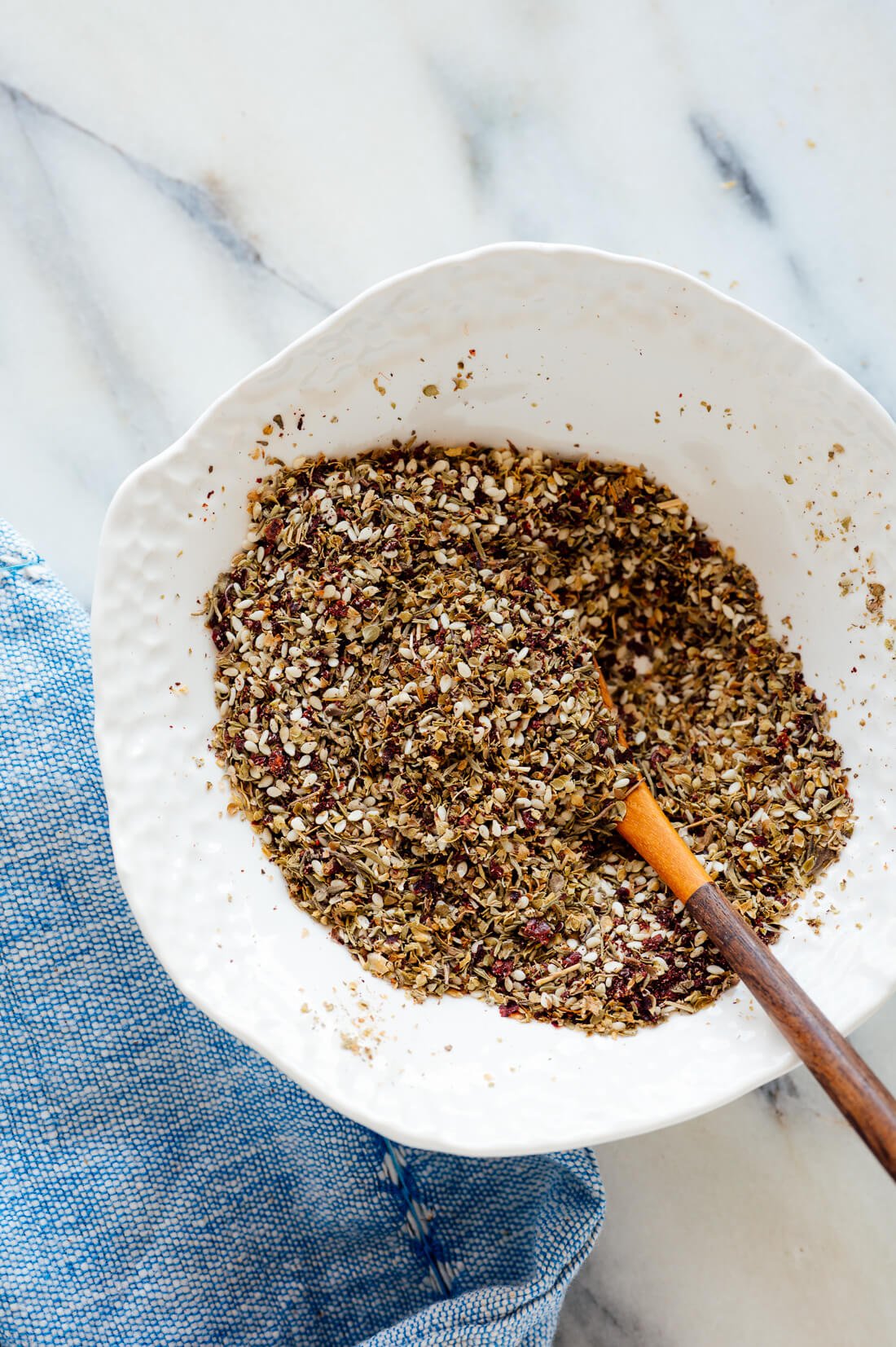Z IS FOR ZHOUG
By:
November 23, 2024

An installment in CONDIMENT ABECEDARIUM, an apophenic food-history series from HILOBROW friend Tom Nealon, author of the seminal book Food Fights and Culture Wars: A Secret History of Taste (2016 UK; 2017 US); and also — here at HILOBROW — the popular series STUFFED (2014–2020) and DE CONDIMENTIS (2010–2012).
CONDIMENT ABECEDARIUM: SERIES INTRODUCTION | AIOLI / ANCHOVIES | BANANA KETCHUP / BALSAMIC VINEGAR | CHIMICHURRI / CAMELINE SAUCE | DELAL / DIP | ENCURTIDO / EXTRACT OF MEAT | FURIKAKE / FINA’DENNE’ | GREEN CHILE / GARUM | HOT HONEY / HORSERADISH | INAMONA / ICE | JALAPEÑO / JIMMIES | KECAP MANIS / KIMCHI | LJUTENICA / LEMON | MONKEY GLAND SAUCE / MURRI | NƯỚC CHẤM / NUTELLA | OLIVE OIL / OXYGALA | PIKLIZ / PYLSUSINNEP SAUCE | QIZHA / QUESO | RED-EYE GRAVY / RANCH DRESSING | SAMBAL / SAUERKRAUT | TZATZIKI / TARTAR SAUCE | UMEBOSHI / UNAGI SAUCE | VEGEMITE / VERJUS | WHITE GRAVY / WOW-WOW SAUCE | XO SAUCE / XNIPEK | YOGHURT / YEMA | ZHOUG / ZA’ATAR | GOOD-BYE TO ALL TZAT(ZIKI).

Condiments are a history of surfeit; a meandering and digressive walk through things that we had way too much of and then, a month later, abruptly not enough. So we figured out how to smooth it out, often in weird and unpredictable ways. So many condiments — cheeses, pickles, jam — began as a desperate attempt to hold onto the overly bounteous harvest through the dour winter months. Condiments that now seem inevitable in their formulation — tomato ketchup, chimichurri, pesto — were once just a pre-freezer way to spread those flavors throughout the year rather than lose them or be forced to eat nothing but tomatoes and parsley for two months.
This is, in large part, why novel condiments ceased to be invented almost 100 years ago — the freezer and the refrigerated railcar obviated the need for invention. Which is nice, sort of, but now we just have the thing instead of the thing pickled, mixed with salt, or sugar, drowned in oil where oxygen can’t get to it, or dried and reformulated at the table; all processes that change the condiment’s flavor profile, mouthfeel and context. There is a trickle, of course, mostly sophistications of existing condiments (xo sauce, for example, or hot sauces with different peppers) or salad dressings (generally from the gilded age until the salad bar crash of 1997). Almost everything else that seems novel is just being sourced from around the world and smuggled out in Trader Joe’s trucks.
Zhoug, the Yemeni chile pepper cilantro condiment, is a great example of a few of these phenomena. It is a simple sauce made from cilantro, olive oil, salt, chile peppers, and, often, garlic, lemon or lime. It got popular in the middle of the 20th century in Israel when there was an influx of Yemeni people, and became popular around the world in the late 20th century. Because it has moved around so much recently, and it’s a vernacular recipe, it’s hard to pinpoint the exact chile that was originally used, but now it’s usually green chiles or Aleppo peppers — or jalapeños. But there are a ton of different versions with various sophistications and heat levels. Sometimes tiny sardines are added to round out the flavors with some umami.
There were similar but unrelated sauces in Mexico before the conquest — cilantro is one of the few major herbs to exist in both Old World and New World versions — and they also existed in variations that trended from tomato based to a cilantro heavy salsa verde with tomatillos.
It’s a great and versatile green sauce, at home on falafel, eggs, a sandwich, or hummus. Middle Easterners, Southern Asians and Hispanic people have the lowest incidence of cilantro intolerance of people surveyed (a fraction of that experienced by caucasians or East Asians) though scientists have not come to an agreement on the direction of causation.

Is za’atar a condiment or a spice?
Like the best spices, it’s both. Like salt or furikake, or anything on the table at a pizza place, it is so often used at the discretion of the end user that it qualifies as a condiment. And a great one — similar to furikake, it has a really complex flavor profile that is both distinct and ameliorative, quickly disappearing into dishes and improving their flavor.
Like furikake it has sesame seeds and salt, but the central flavor in za’atar is sumac, the criminally underused tangy dried and powdered fruit of the sumac plant. A great flavor — so protean that you can make lemonade out of it, salad dressing, or just smoke it. But don’t smoke the za’atar; put it on eggs, or in your yoghurt. Or rub it on your chicken, if you know what I mean.
Za’atar is also the name of an herb that is in za’atar which is similar to oregano or thyme but likely originally referred to a strain of hyssop called ezov in the Torah, which is confusing, and also an unnecessary amount of context. But you want the mixture, not the other thing. And it will make you want to have sumac around to sprinkle on things — it’s a really versatile and unique spice and a reminder that condiments are often just sauces, spices, and ingredients that we, the people eating the food, have wrested control of.
TOM NEALON at HILOBROW: CONDIMENT ABECEDARIUM series | STUFFED series | DE CONDIMENTIS series | SALSA MAHONESA AND THE SEVEN YEARS WAR | & much more. You can find Tom’s book Food Fights & Culture Wars here.
